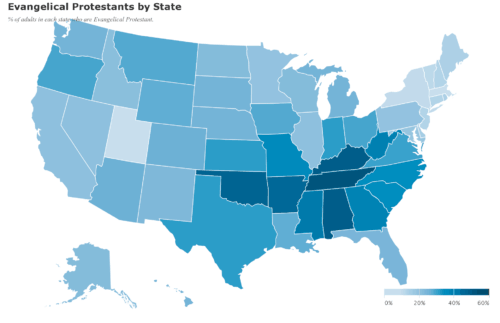
This is the part 3 in a series of posts summarizing key findings from researching 17 of Cru’s Top Sending Campuses in the nation.
See the Intro for a full list of all the campuses profiled (and links to each).
In talking to these top sending schools, I’d ask “How did you become a sending campus?”
Over and over I heard: “It’s who we are.” “Sending is what our movement is about — we’re about mission.” “It’s just in the air of our movement that students breathe.”
My question for all of them: “OK, that’s great for y’all but what advice do you have for a campus that doesn’t have that culture? What would you tell a campus who wants to grow from not much sending to being a sending campus?”
The answers can be grouped into:
Three Steps to Move from Not Much Sending to Being a Sending Campus
-
Cast Vision to Create a Sending Culture (It starts with Staff)
- “As staff, we are cultural architects — creating a culture that loves and embraces the mission of sharing Jesus with people. And here’s an opportunity to do that full time.” – SLO
- “Be a visionary for what we are doing. And then ask students to join you in doing it full time. Hopefully the response is, ‘yeah, why would I not want to be a part of that?’ – SLO
- “Regularly use illustrations from your time overseas in talks and devotionals. Share stories often at staff team meetings and small groups”
- “In Madison, when we talk about sending we don’t talk about just filling slots. We talk about changing the culture of our movement to care about the world. “We are Badgers. We go.” “Badgers Go.” It has become our culture not just the heart of a few people or just the staff. It takes time to build this into your movement but it can really change fast if the right students catch the vision.” – Wisconsin
- “You are changing the culture of your movement not just getting people to sign up. This will take time, intentionality and prayer.”
- “Don’t lose sight of the goal: we do what we do in the US to fulfill the great commission. Keep the world as the goal in front of your team and students all the time.”
- Ohio State:
- Our movements always reflect our leaders’ passions
- The movement is always going to reflect the strength of the staff team
- If I’m asking how do I change the movement, I need to ask, what do I need to change?
- I need to ask — how passionate am I about it? What am I teaching? What am I talking about? Am I living this out? Are we highlighting it?
- A&M:
- “As the leader, as the mouthpiece, you need to be telling the stories and leading from experience. Our family goes every third year on international Summer Missions. Your wife has to be in it too. Because a lot of the work will fall on her (getting the kids overseas on Summer Missions).”
-
Normalize Going – Pray for and challenge a foundational sending class
- “It needs to go from something only special people do to a normal option. This is a normal consideration for every Christian” – Miami
- “Once it happens it becomes a norm and they see other students do it and they want to do it – OK State
- “Pray for and challenge 4-8 graduates to go together. Once you do this the ball will start rolling down hill and future generations will want to do the same thing. Plant these seeds with your current freshman class. ‘where will you guys go together after you graduate?’”
- “You need a couple really key students to buy in. Challenge the right students to really consider it and pray about it.”
- Our best/fullest STINT teams all had the same scenario: a student committed to STINT early (Junior year or the summer before their Senior year) and they spent the entire year raising up a STINT team around themselves
- Challenge students the spring of their junior year – Virginia Tech
- We used to do most of our recruiting during student’s senior years. But we kept finding that we were too late. Students had already accepted jobs.
- At Virginia Tech we have a lot of engineering students who have lots of (high paying!) options after college
- For most of our students, the summer after the junior year internship is the job interview. So they decide by October 1 senior year.
- So we started doing a Junior Recruiting Dinner — the spring of their junior year.
-
Send First (from Texas A&M)
- In Cru, our mission is Win-Build-Send
- But for most campuses (in Cru) it becomes Gather-Build-Keep
- You will rarely have “enough” (though we do ask staff to think through how they’ll replace themselves when they go overseas)
- Like with evangelism, we can easily leave sending out to be added in later when someone is “mature” or our movement is ready to begin sending.
- However, these things don’t really work being tacked on at the end.
- They have to be part of the DNA of the movement.
- When does the DNA get there? At conception. Same with sending. Students need to be hearing it from Day 1.
- At the front door of people being involved with us, we want them to know we are actively helping students know Christ, and they can be part of that.
- We also want them to know that the gospel needs to go to the whole world and they can play a part in that too.
- We may not be sending freshmen on STINT, but we want to plant the seed in their mind that they could go down the road.
- We can easily look at our current situation and say that we have nothing to give, or no one to send.
- We seek the Lord’s blessing here in hopes that one day we will have extra to send. But God blesses us that we can be a blessing to others.
- Psalm 67 starts: “God be gracious to us and bless us, 
And cause His face to shine upon us. That Your way may be known on the earth,
Your salvation among all nations.”
- Whether it is with our finances or people there is generally too big of a gap between the receiving and the giving. We tend to hold on too long. We need to send out resources, or we will become ingrown.
- I need young interns here to help reach the next class of freshmen, but if it comes to Interning here or Stint over at our partnership, I want to send them to labor there.
- I would rather send a solid STINT team than have a big team here.
- You’ll get a lot of them back (STINT’ers coming back as staff in the States) Â – they won’t all go overseas long term though hopefully a lot do
- We have 7 staff and 4 of them want to go overseas
- And it’s going to be hard if they all leave
- But I would send them.
- If we have a smaller team, it’s OK
- That’s what we are about







